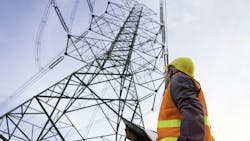The Fragile State of America's Infrastructure: Insights from ASCE's 2025 Report Card
I may have mentioned several times the large amounts of emails, white papers, and reports that vie for my attention every day. It’s a normal occurrence and every editor looks forward to finding the jewels hidden there, and every now we do! Not long ago I hit the jackpot that I had been waiting for. It was four years in the making and it was worth the wait! It was ASCE’s (American Society of Civil Engineers) 2025 Report Card for America’s Infrastructure.
ASCE compares it to a comprehensive snapshot of the nation’s fragile infrastructure and it takes 18 categories ranging from aviation to wastewater to do that. The ASCE infrastructure report card has been a tradition for over two decades now. The 2025 report card is the best since its start. It’s the first time the overall grade hit the C rating. That doesn’t mean our infrastructure is average.
According to ASCE the C rating represents mediocrity requiring attention, but it’s moving in the right direction. Our power delivery system is part of the energy sector, but it’s going in the wrong direction. The energy sector dropped to a D+, which is shocking after the highest demand growth in decades, but it’s being supported by an antiquated infrastructure. We work extremely hard keeping it powered properly, but then everybody forgets how brittle it is!
Can't Beat Murphy's Law
It’s the old out of sight, out of mind philosophy everyone is guilty of having. But if we consider how interconnected electricity is with the other infrastructures listed on the report card, we can’t ignore it. Take for example, a few months ago, there was an oil-fire in an electrical substation in London. It resulted in Heathrow airport being shut down for 18 hours disrupting air traffic worldwide. It was a classical single point of failure scenario and should not have happened in today’s digitally enhanced world, but it did.
Granted London is not part of the U.S. infrastructure, but our infrastructures have a lot in common. It emphasizes how critically important the operation of the energy infrastructure is to society. There are several good accounts of the incident available for readers interested in the details, but for this discussion let’s keep this simple.
The North Hyde 275kV substation was the direct supply point for electricity to Heathrow. The power network dates back more than sixty years. It's an area that has been experiencing rapid load growth, which has been challenging its aging infrastructure. There were other substations on the network that could have provided power.
Heathrow’s emergency backup power procedure, however, relies on manually reconfiguring the power feed rather than having an automatic throw-over scheme. In addition, Heathrow does not have backup generators with sufficient capacity to meet the airport’s peak loads. Lack of redundancy can be an expensive lesson when it comes to system reliability and helps explain why modernization is so important to counter the network threats.
As Strong as Its Weakest Link
Back in the day, we weren’t so interconnected as today’s world is. Nowadays a single point of failure can lead to cascading failures. Once they’re triggered the failure can expand to an entire facility or system if there’s no adaptability built into the scheme. Aging infrastructure adds to the problem with its limited flexibility, making widespread failures possible because it can’t compensate for the failed element.
Taken in that context, it’s easier to understand the ASCE grade explanations presented in the report card. When I first saw the C grade designated as requiring attention, it wasn’t apparent as to why. After reading about the disruption of an airport by a single point of failure event it was. One expert looking into the Heathrow event said it was possible to create backup systems robust enough to maintain normal operations, but it’s expensive. Ultimately, it was a cost-benefit analysis, but is it? That may be legacy thinking talking.
Moving those infrastructure categories into what ASCE refers to “as a state of good repair” is more of a cost-benefit-risk analysis. That’s going to require major infrastructure investments because they all need improving. We can’t afford to pick and choose, they’re all interrelated. ASCE’s report card included some enlightening facts and figures. There’s one chart listing the price-tag for moving each infrastructure into that “state of good repair,” which totals USD 9.14 trillion. We had USD 5.45 trillion funded, but those funds are uncertain. Unfortunately, our infrastructure doesn’t have time for uncertainty!
About the Author
Gene Wolf
Technical Editor
Gene Wolf has been designing and building substations and other high technology facilities for over 32 years. He received his BSEE from Wichita State University. He received his MSEE from New Mexico State University. He is a registered professional engineer in the states of California and New Mexico. He started his career as a substation engineer for Kansas Gas and Electric, retired as the Principal Engineer of Stations for Public Service Company of New Mexico recently, and founded Lone Wolf Engineering, LLC an engineering consulting company.
Gene is widely recognized as a technical leader in the electric power industry. Gene is a fellow of the IEEE. He is the former Chairman of the IEEE PES T&D Committee. He has held the position of the Chairman of the HVDC & FACTS Subcommittee and membership in many T&D working groups. Gene is also active in renewable energy. He sponsored the formation of the “Integration of Renewable Energy into the Transmission & Distribution Grids” subcommittee and the “Intelligent Grid Transmission and Distribution” subcommittee within the Transmission and Distribution committee.
